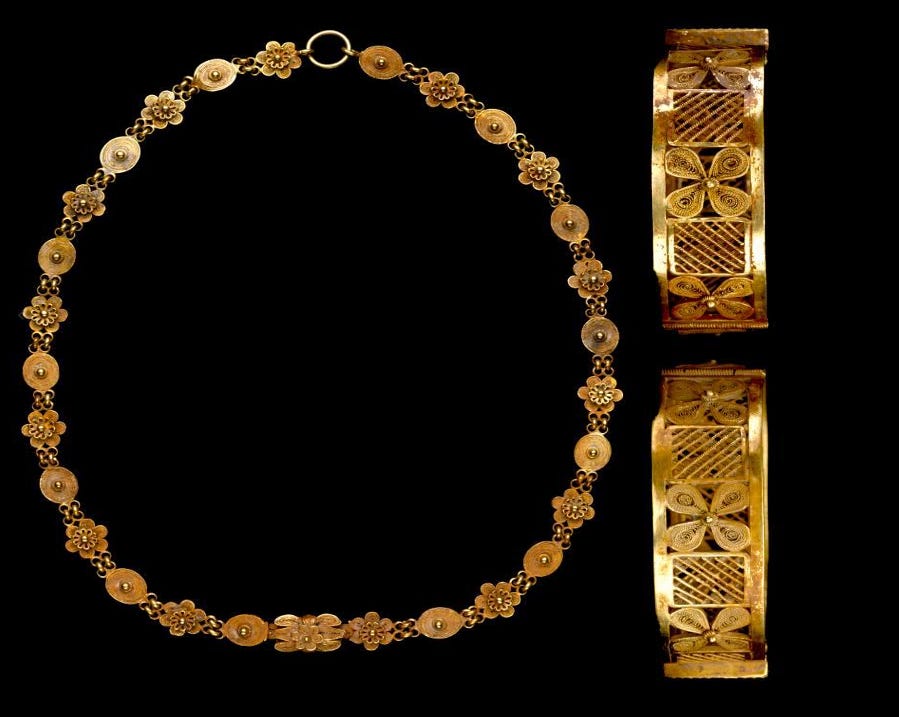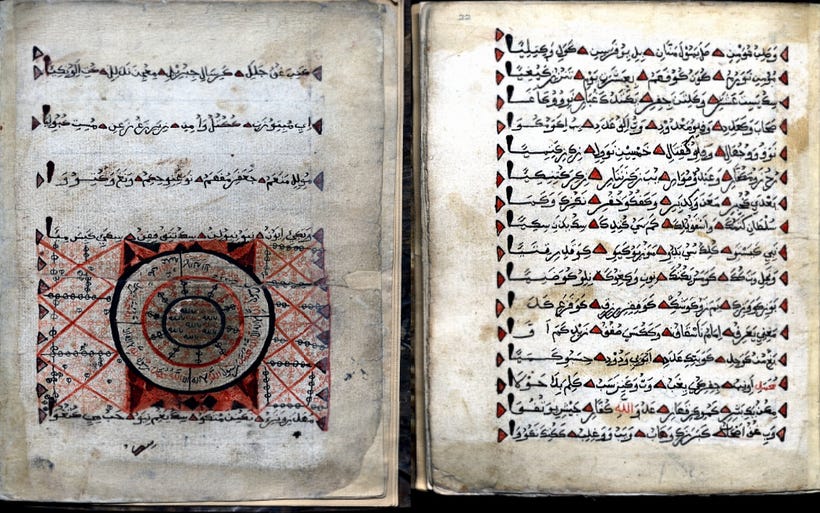Online resources for African history: links to African collections held at 33 Western Museums
Up to 90% of Sub-Saharan Africa’s material cultural legacy is kept outside of the continent, according to a French government-commissioned 2018 report by Senegalese economist Felwine Sarr and French historian Bénédicte Savoy.1
Amongst the top-ranking Museums in Europe, the Musée Royale de l’Afrique Centrale in Belgium comes first, with an estimated 180,000 African artifacts in its possession. This is followed by Humboldt Forum in Germany with 75,000 artifacts; the Musée du Quai Branly Jacques Chirac in France with 70,000; the British Museum with 69,000; and the Weltmuseum of Vienna in Austria, which holds about 37,000 African artifacts.
These collections dwarf the inventories of virtually all African museums. The report cites Alain Godonou, a specialist in African museums, who observed that “with certain rare exceptions, the inventories of the national museums in Africa itself hardly ever exceeded 3,000 cultural heritage objects and most of them had little importance or significance.”
According to Gus Casely-Hayford, the former director of the Smithsonian Museum of African Art and current director of the V&A East museum:
“If you look at a collection, whether Quai Branly or whether it’s the British Museum or whether it’s the Smithsonian, any single one of those institutions has more in terms of significant objects than the whole of the collection of museums across sub-Saharan Africa combined – any single one of them.”2
The Benin Bronzes at the British Museum in London, Getty Images.
A disproportionate amount of resources for African history are therefore warehoused in Western institutions, which makes them inaccessible to most researchers, especially those from the continent of their origin. Fortunately, a few Western and African institutions have digitized a small proportion of their vast collections, which include not just African artifacts, but also manuscripts, Photographs, and natural history specimens.
The following is a brief outline of links to the location of specific collections at each major institution.
The African collection at the British Museum comprises objects from diverse sources, primarily from Nigeria, Ghana, Sudan, Ethiopia, and Egypt. This includes some of the most historically significant collections, such as the Artworks from the kingdoms of Benin and Asante, paintings from Ethiopia, and artifacts from Ancient Nubia and Egypt. Over 70,000 artifacts, old photographs, and manuscripts have been digitized from virtually all parts of the continent.
Links to: African artifacts at the British Museum; old African photographs; and Manuscripts.
The vast African collection at the Musée du Quai Branly Jacques Chirac was obtained from French West Africa and Madagascar, primarily from the former colonies of Mali, Senegal, Burkina Faso, Côte d'Ivoire, and Guinea, with smaller collections from the rest of the continent.
Links to African Artifacts at Quai Branly, old Photographs, and Manuscripts.
Drawings of Houses and House plans with description of their construction written in the Bamum script, attributed to Ibrahim Tita Mbohou, early 20th century, Quai Branly. Inventory number: 70.2008.70.13
On Patreon: ‘Themes in West African Art.’
walled gate to a house in Nyamina, Mali. ca. 1880-1889, Quai branly. No. PV0003930.
The African collection at the Musée Royale de l’Afrique Centrale (Belgium) was primarily taken from the D.R.Congo, Angola, and the republic of Congo. It consists an estimated 40,000 Artifacts and Photographs.
Link to: African artifacts and Photos at the Musée Royale.
Another large African collection is found at the Penn Museum (US), including artworks from Egypt, Nubia, Asante, the Roman and Islamic Maghreb, Kuba, Swahili, and the Yoruba. It also contains a significant collection of rare Meroitic inscriptions and painted pottery.
Jar decorated with a frieze of foraging giraffes and undulating snakes spitting ankh signs. ca. 100-1 BCE Karanog, Meroitic period. Penn Museum. Object Number E8183. Jar decorated with two wreaths at the top; below which are swans, trees, bugs, and "tables of the sun". ca. 100-1 BCE Karanog, Meroitic period. Penn Museum. Object Number E8157.
A large collection of African artworks is also held by the Boston Museum of Fine Arts (US), primarily consisting of artifacts from ancient Nubia including historically significant works from the kingdom of Kerma and Kush.
The Africa collection at the Geneva Museum of Ethnography (Switzerland) contains an estimated 12,000 objects. It includes historically significant artworks from Ethiopia, Danhomè (Benin), and figurative sculpture from most parts of South, West, and Central Africa.
The African collection at the Staatliche Museen zu Berlin (Germany) was obtained from the former German colonies of Tanzania, Rwanda, Burundi, Togo and Cameroon, but also contains material from Nigeria and Sudan. It consist an estimated 12,000 Artifacts, Photographs and maps.
pair of wooden sandals, covered with an ornamented silver sheet with borders made of attached silver drops, and a golden knob for support. Swahili, 19th century, Tanzania, SMB museum. No. III E 4685 a,b.
The African collection at the Smithsonian’s National Museum of African Art (US). Those that have been digitised consist of about 12,000 artifacts and old photographs from across the continent. It includes some historically significant archives such as the carved tusks of Loango, and old colonial photographs.
The African collection available online at the Metropolitan Museum (US) comprises nearly 3000 works from most parts of the continent, including artifacts from ancient Egypt and Nubia, medieval Ethiopia and Mali, and figurative sculpture from West and Central Africa.
The African collection at the Brooklyn Museum (US) includes works from West Africa and Central Africa, with a few holdings from Eastern and southern Africa. It has digitized a little over 3,000 African artifacts.
anthropomorphic wine cup in the form of a kneeling man holding his chin. 19th century, Kuba kingdom, D.R.Congo. Brooklyn Museum. No. 56.6.37.
The African collection at the Detroit Institute of Arts (US) includes artworks from most parts of the continent, especially from the Kuba kingdom, as well as the Asante and Benin kingdoms. An estimated 2,100 artifacts have been digitized.
The African collection at the Yale University Art Gallery (US), which is available online, includes an estimated 2,9000 historical artworks from various societies such as the ancient Nok Neolithic culture of Nigeria, the Kuba kingdom, Ethiopia, and the Loango ivories.
The African collection at the Art Institute of Chicago (US) includes artworks from ancient Egypt, Benin City, Ethiopia, and the Swahili coast. About 1,500 of these Artifacts have been digitized.
The African collection at the Virginia Museum of Fine Arts (US) includes an estimated 1,800 digitized artworks, such as the terracotta and bronzes of Djenne-Jenno, Asante sculptures, and Ethiopian icons
The African collection at the New Orleans Museum of Art (US) is a relatively small but significant inventory that includes artworks from medieval Mali, the Dogon, and the Yoruba kingdoms.
The Houston Museum of Fine Arts (US) also holds a relatively small but significant inventory of African artwork, including gold objects from the Gold Coast (Ghana) and Senegal.
Other African collections include those at: the Cincinnati Art Museum (US), which also includes carved ivories from Loango; the Royal Ontario Museum (Canada), the Houston Museum of Fine Arts (US), the National Museum of Denmark, The Nationaal Museum van Wereldculturen (Netherlands), the Kuba artworks at the Princeton University Art Museum (US), and the Ethiopian and Asante artworks at the Victoria & Albert Museum (UK).
Gold necklace and pair of bracelets, ca. 1845-1855, Akan artist, Ghana. Houston Museum of Fine Arts. No. 97.1519.1-.3.
African Manuscript collections.
The largest collection of digitized African manuscripts is held at the Endangered Archives Programme, which contains images of numerous old manuscripts and photographs from hundreds of institutions and private collections across virtually all parts of the continent.
The largest and most historically significant of the collections from the pre-colonial period were obtained in; Mali ; Nigeria ; Ethiopia ; Senegal ; Lamu (Kenya) ; and the kingdom of Bamum (Cameroon). The majority of these manuscripts are kept in local institutions and private collections in these countries.
Chronicle of the Bamum kingdom, Archives du Palais des Rois Bamum, Fumban, Cameroon. Endangered Archives Programme No. EAP051/1/1/1/3.
The Hill Museum & Manuscript Library (US) has a large collection of digitized African manuscripts from Mali and the largest collection of electronic and microfilmed Ethiopian/Eritrean manuscripts in the world. As is the case with the endangered archives programme, most of these manuscripts are kept in local institutions and private collections in both countries.
Links to: Ethiopia Repositories at HMML, Mali Repositories.
The Digital collections at the SOAS (UK) include a relatively large archive of African manuscripts from Bornu and the Hausaland; and the Swahili Coast. They include historically significant works such as the writings of the famous woman scholar Nana Asmau, and the utendi poetry of the Swahili.
Another large manuscript collection is held at the Bibliothèque nationale de France (France). It includes many of the most historically significant West African manuscripts, and Ethiopian manuscripts such as the famous Timbuktu Chronicles and the Hatata Philosophical treatise, both written in the 17th century.
Bwana Mwengo's Utendi wa Herekali, copied by Muhamadi Kijuma. 19th century, Lamu. SOAS manuscript number MS 45022.
Old African photograph collections.
The collection of old African photographs at the Archives Nationales d'Outre-Mer (France) is the largest of its kind. It primarily consists of colonial era photos from Madagascar, Cameroon, Senegal, Algeria, Guinea, Congo, Ivory Coast, Benin, and Comoros. It includes some of the most historically significant photos from these regions, especially some of the oldest architectural monuments that were destroyed.
Another large collection of old African photographs is held at the Museum of Archaeology and Anthropology (UK). Most of the photos were taken in the former British colonies in East and Southern Africa, and include some of the earliest images of the stone ruins of southern Africa and the East African coast.
A relatively small but significant collection of old African photos (and a handful of manuscripts) is held at Northwestern University (US). The most historically significant of these are; The Humphrey Winterton Collection of East African Photographs: 1860-1960, the E. H. Duckworth Photograph Collection (1894 -1972), and about 64 Arabic Manuscripts from West Africa including works by scholars like Muhammad Bello, Umaru al-Kanawi and Ahmad Baba.
Street scene in Kano, Nigeria. ca. 1930-1972. E. H. Duckworth Photograph Collection. Northwestern University.
The Library of Congress (US) holds about 40 West African manuscripts, primarily from Timbuktu, as well as over 1000 photos from its Africana Historic Postcard Collection.
The Photographic archive of the Italian Geographic Society includes a fairly significant collection of African photographs, mostly from the countries of Ethiopia and Somalia.
Other significant photo collections include those held at the University of California (US), and the Koloniales Bildarchiv , University Library Frankfurt am Main (Germany).
Fasiladas Bath; c16th, Gondar, Ethiopia. c. 1950. Africana Historic Postcard Collection. Library of Congress.
The above outline of African collections in Western institutions is far from exhaustive, but should provide enough resources for research on African history online that may otherwise be physically inaccessible.
My latest post on Patreon is a comprehensive collection of links to over 3,000 Books and Articles on African history, covering over five thousand years of history from across the continent.
Please subscribe to read about it here:
The Restitution of African Cultural Heritage: Toward a New Relational Ethics, by Felwine Sarr and Bénédicte Savoy
http://restitutionreport2018.com/
Africa’s looted heritage needs to come home, by Rachel Hamada. https://thisisafrica.me/politics-and-society/africas-looted-heritage-needs-to-come-home/














Imagine invading someone's house, stealing hundreds of thousands of irreplaceable, priceless property, admitting that theft in your own history books and STILL refusing to return what you stole? Not to mention the many other colonial crimes against humanity/the Motherland. The caucasity is endless and unhinged.
May they never know peace until justice is fully served.
It would be nice for these artifacts returned to their home countries, although some degree of political stability definitely needs to be a pre-condition. A shame so many are being destroyed and stolen in Sudan.